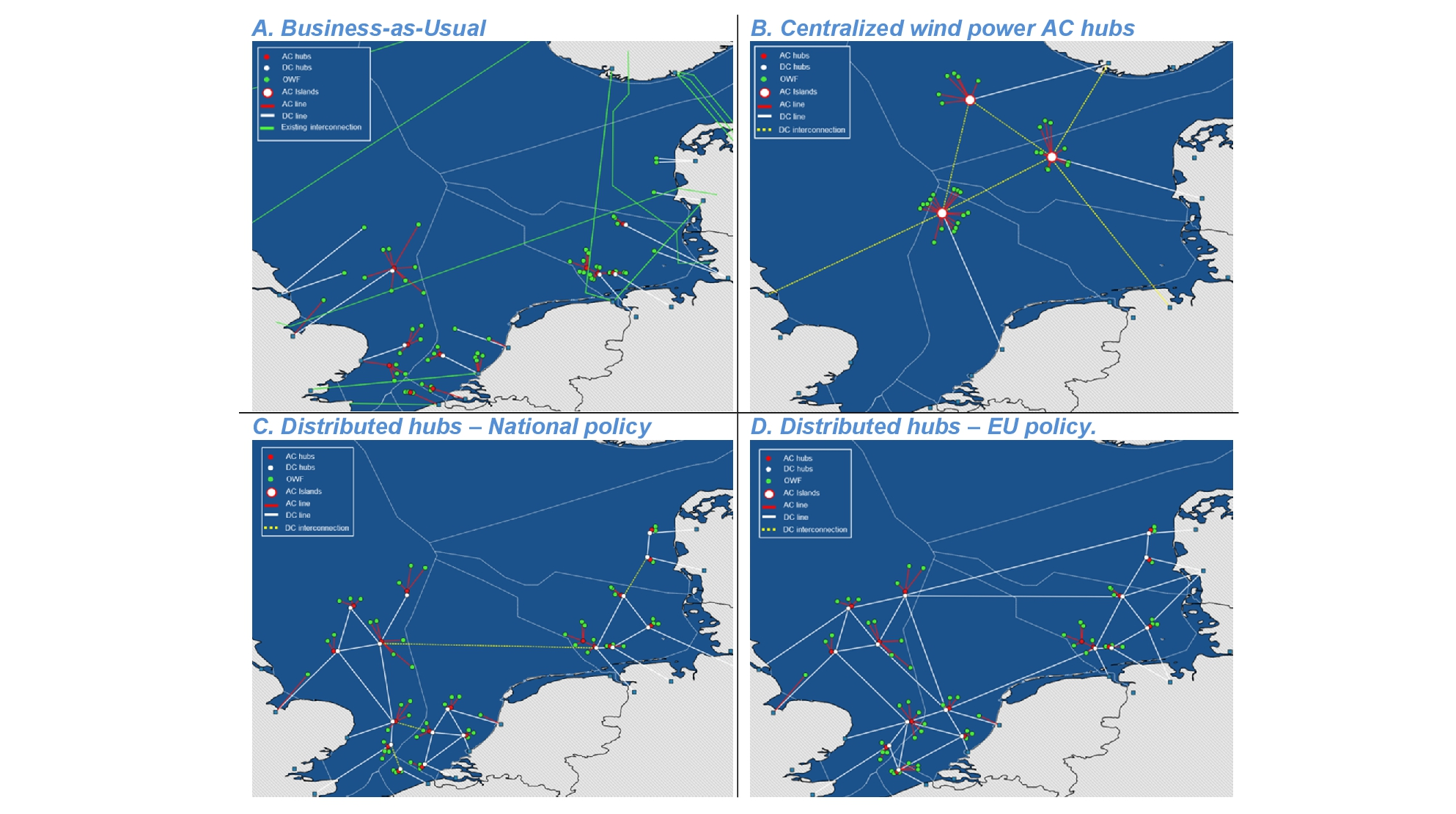Starting Point
While PROMOTioN’s Work Package 1 was the starting point of the project, providing directions and focal points, Work Package 12 is the place of convergence. In WP12, possible concepts for the future grid are currently being defined. These concepts establish the direction for further analysis aimed at development of the Deployment Plan. This Deployment Plan will provide a basis for the development strategies for a Meshed Offshore HVDC Grid ("MOG"). It will include an evaluation of the different concepts, discussing their pros & cons, and provide an understanding of the challenges in developing such a grid and the business case for doing so.
Concepts for the future
The basis of the analysis is the current state of development, or "Business-as-Usual", characterized by the national development of radial networks for connecting offshore wind farms. Alternative Concepts will be analysed to identify which are more beneficial when compared to this reference point.
The Concepts analysed to date are:
A. Business-as-Usual
- Regulatory challenge: limited
- Strongly meshed national offshore grid, weakly interconnected amongst each other
- DC interconnections might be operated as point-to-point interconnections.
- Offshore generation is meant to be evacuated mostly to the owner country’s system.
- Flexibility for the evacuation of wind power, but limited to a national level.
B. Centralized wind power AC hubs
- Regulatory challenge: Some OWF connected to the islands belongs to other countries. Each country keeps a direct or semi-direct access to its own OWF
- DC interconnections can be operated as point-to-point interconnections.
- Large DC meshes to provide alternative routes for evacuating bulk wind generation
C. Distributed hubs – National policy
- Regulatory challenge: limited
- Strongly meshed national offshore grid, weakly interconnected amongst each other
- DC interconnections might be operated as point-to-point interconnections.
- Offshore generation is meant to be evacuated mostly to the owner country’s system.
- Flexibility for the evacuation of wind power, but limited to a national level.
D. Distributed hubs – EU policy
- Regulatory challenges: a common regulatory framework must be agreed on.
- Strongly meshed international offshore grid
- High operational complexity
- Highest level of flexibility for the evacuation of wind power generation
The way forward
As a basis for the analysis of the Deployment Plan, the current deliverable, D12.1, provides an overview of the concepts identified so far. Additionally, we will gain an initial understanding of the challenges involved in the development of the MOG. We will further analyse our understanding of these concepts and any related challenges together with PROMOTioN partners in the other Work Packages.
For the analysis and development of the Deployment Plan we will make use of the following approach: Interim results will be presented in the upcoming conclusions of Work Package 12. Furthermore, we will discuss whether other concepts can be identified and included in the analysis.
Deliverable 12.1: Preliminary analysis of key technical, financial, economic, legal, regulatory and market barriers and related portfolio of solutions (Download PDF 3.5 MB)

